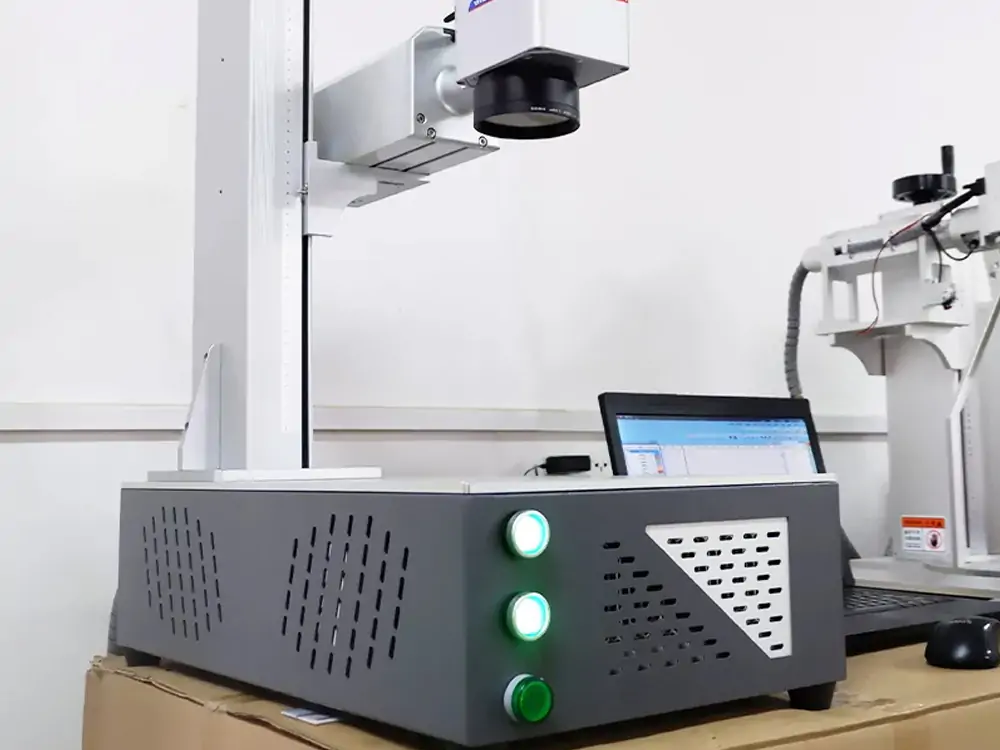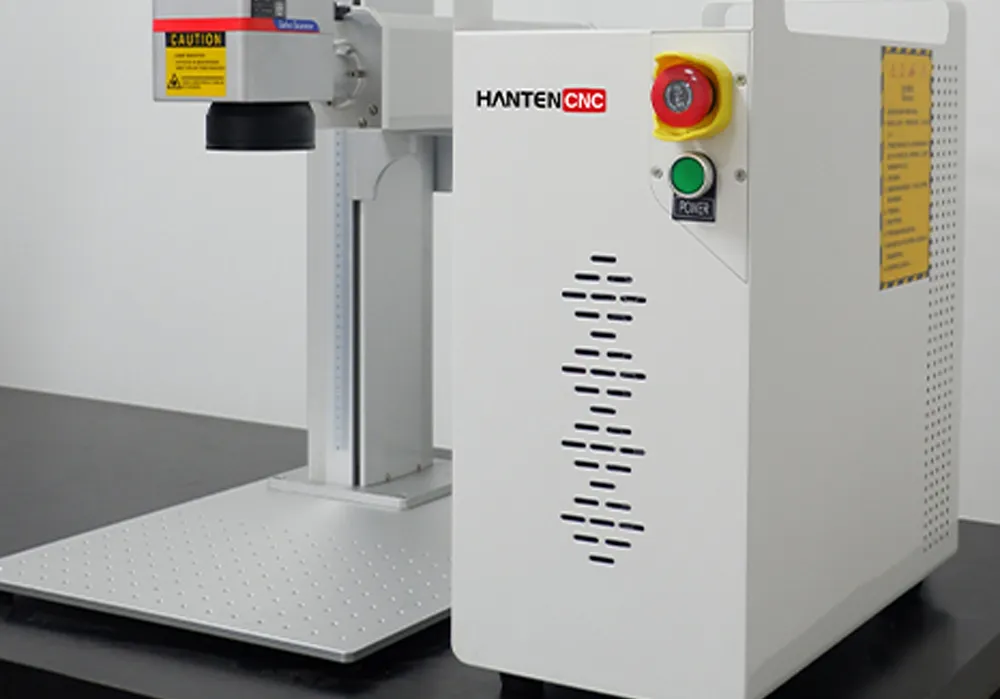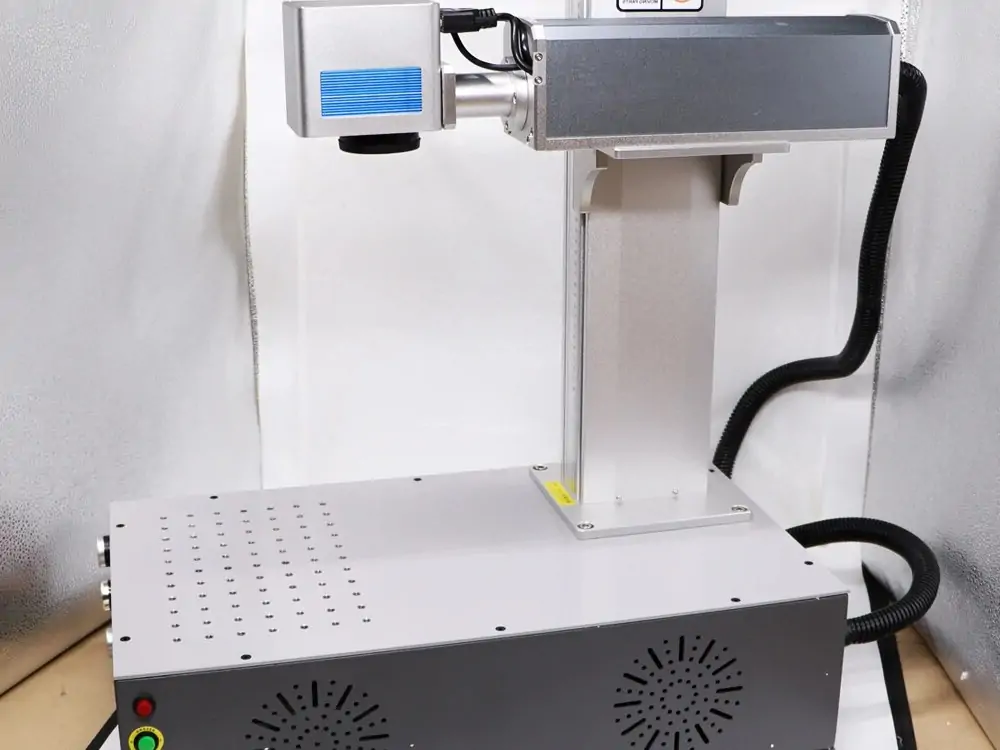Mopa laser and fiber laser are two key technologies that have attracted much attention. Both laser technologies have a wide range of applications in industry and manufacturing. These two laser technologies have unique features and advantages. They are suitable for different application scenarios.
This article aims to provide an in-depth discussion of the characteristics, advantages, disadvantages, and application areas of Mopa laser and fiber laser. Readers can better understand the differences and benefits of these two essential laser technologies. Through comparative analysis, we will provide you with helpful information. It can help you make an informed choice in the context of your specific application.
What is A Mopa Laser
Mopa laser (Master Oscillator Power Amplification) is a type of solid laser. Its working principle is based on combining a master oscillator and a power amplifier. Mopa laser has high pulse control capability and can adjust parameters. Such as pulse frequency, width, and power. This flexibility makes Mopa lasers widely used in various industrial fields. Such as laser cutting, laser marking, laser welding, etc.
Pros
- Adjustable Pulse Width: Mopa laser systems adjust the pulse width to suit different application needs. This flexibility allows Mopa lasers to achieve finer control and a more comprehensive range of applications during material processing.
- Pulse Energy Control: The Mopa laser system can control pulse energy. It can adjust energy parameters according to specific tasks and improve processing efficiency. Finally, it will ensure processing quality.
- High-frequency Modulation: Mopa lasers can achieve high-frequency modulation. It gives them unique advantages in specific applications. As in some marking and cutting applications.
- Broad Applicability: Mopa laser can be used in various material processing fields. These include metal cutting, engraving, marking, medical device manufacturing, and more. Its flexible parameter change makes it suitable for different kinds of materials.
Cons
- Higher Complexity And Cost: Mopa laser systems are more complex than traditional fiber laser systems. It contains many components, so its manufacturing and maintenance costs can be higher.
- System Complexity Limits Application Scope: Due to its complex system design, Mopa laser systems may need higher skill levels from operators. It limits its popularity in some simple applications.
- Limited Transient Response: Due to its unique design, the transient response of the Mopa laser system may be limited. It is better than fiber lasers in some applications that need swift response.
What is A Fiber Laser
Fiber laser is a laser technology that uses optical fiber as the laser medium. Fiber laser has the characteristics of high efficiency, high beam quality, and stable output power. Fiber laser is widely used in cutting, welding, marking, engraving, and other industrial fields. It has made remarkable achievements, especially in the field of material processing.
Pros
- High Efficiency And Energy Saving: Fiber laser has high electro-optical conversion efficiency. It can effectively convert input electrical energy into laser energy. Thereby, it can save energy and reduce operating costs.
- Excellent Beam Quality: The beam quality produced by fiber lasers is very high, with a minor focus diameter and a high beam quality factor (M²). Therefore, fiber lasers perform well in fields. Such as high-precision processing, cutting, and welding.
- High Stability And Reliability: Fiber lasers usually have excellent long-term stability and reliability due to the strength of the fiber structure. It is ideal for long-term continuous work and industrial production applications.
- Easy to Integrate And Operate: Fiber lasers have a simple structure and small size. It can be easily integrated into automated production lines. Operation and maintenance are relatively convenient.
- Flexible Output Power Change: Fiber lasers can achieve precise changes in output power. This is achieved by changing the pump power or tuning the resonant cavity. This can adapt to different processing needs.
- Suitable For A Variety of Materials: Fiber lasers can be ideal for processing various materials. Including metals, non-metals, plastics, etc., with a wide range of applications.
Cons
- High Initial Investment Cost: The initial buy cost of fiber laser equipment is high. It can be a financial burden for some small businesses or those starting.
- Fiber Loss: The fiber of the fiber laser will suffer a certain amount of loss during long-term use, and the fiber may need to be replaced regularly. It increases operating costs and maintenance difficulty.
- Limited By Fiber Length: Fiber length limitations may affect its range of applications. Especially for specific applications that require long optical fibers.
Comparative Analysis of Mopa Laser And Fiber Laser
(1)Light Source Characteristics
Mopa laser and fiber laser differ in light source characteristics. The main feature of the Mopa laser is its pulse control capability. It can achieve cutting, marking, and welding of different materials by adjusting pulse parameters. Fiber laser has high beam quality and stable output power. So, it is suitable for high-precision processing applications.
(2)Pulse Control Capability
Mopa laser has significant advantages in pulse control. It can precisely control the frequency, width, and power of pulses. Mopa laser is suitable for the fine processing of materials. The pulse control of a fiber laser is relatively simple and less flexible than that of a Mopa laser.
(3)Beam Quality
Fiber laser is superior in terms of beam quality. It has a small spot size and high beam quality, suitable for high-precision cutting and welding. The beam quality of the Mopa laser is less stable and excellent than a fiber laser.
(4)Applicable Fields
Mopa laser due to its excellent pulse control capabilities. It is suitable for processing a variety of materials. Especially in applications requiring different processing parameters. Fiber laser is ideal for high-precision processing fields. Such as micro-cutting, fine welding, and high-quality marking.
Conclusion
We have compared the advantages and disadvantages of Mopa laser and fiber laser. We can easily find that these two laser technologies have unique characteristics. They are suitable for different application fields. Mopa laser has more flexible and diverse processing options. It has adjustable pulse width, pulse energy control, and high-frequency modulation capabilities. So, it is particularly suitable for scenes requiring fine control and multi-material applications. Fiber lasers, on the other hand, are known for their high efficiency, stability, and excellent beam quality. So, it is suitable for industrial applications such as high-precision machining, cutting, and welding.
The appropriate laser technology depends on specific application needs, material properties, and cost considerations.
For some scenarios that focus on flexibility, multi-function, and multi-material processing, Mopa laser may be a more suitable choice.
Fiber lasers may have more advantages for applications that pursue high efficiency, high stability, and high precision.
Whether it is Mopa laser or fiber laser, they all represent the progress and innovation of laser technology.
If you need a MOPA laser marking machine or fiber laser marking machine, please click https://hantencnc.com/laser-marking-machine for more information.



